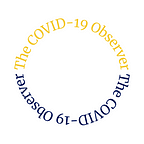Has COVID Changed the Way We Memorialize Those We’ve Lost?
By Ruth Nasrullah
A few days ago I read about the desecration of trees in the area outside the site of the former Buchenwald concentration camp. According to the article, “The trees were part of the 1,000 Beeches project, an effort to plant trees along the 118-mile route that prisoners from Buchenwald were forced to march in April 1945 when the Nazis tried to evacuate the camp as U.S. forces closed in…” The story got me thinking about the different ways we memorialize people and events, and because I, along with my husband, manage COVID-19 Wall of Memories, it made me wonder: Has COVID changed the way we memorialize those we’ve lost?
Memorials come in a range of sizes and shapes and are created from a variety of materials. Often, they are stone or granite; sometimes, they are living things like the Buchenwald trees. Sometimes memorialization is done through artwork, as seen in the work done by artist Marcos Lutyens. (COVID-19 Wall of Memories is helping organize a rose memorial in Houston; stay tuned for more news about that.)
And of course, there are digital memorials like COVID-19 Wall of Memories or various social media accounts, particularly on Twitter, that re-post hundreds or even thousands of online obituaries. My husband and I were interviewed for an interesting article last year on the impact of COVID on obituaries and memorials.
With the onset of COVID-19, memorials became something different. In the first year or so, graveside services and traditional memorial gatherings were uncommon due to the concern about social distancing. The internet offered infinite opportunities to memorialize those whom we could not wish good-bye at their grave.
Now that the U.S. death rate from COVID is so much lower than in 2020 and early 2021, memorials have taken on a different meaning. There is a clamor for permanent physical memorials to remember the COVID dead and a demand for a formal recognition by local, state and federal government. In other words, we have reverted to a more traditional type of remembrance.
Cruelty, kindness and health are linked
Buchenwald was entirely manmade and the holocaust was not a natural phenomenon. Although some theorize that the coronavirus that causes COVID-19 was created in a lab, the majority of scientists believe it is a zoonotic pathogen, meaning it is transmitted from animals to humans. As noted in the WHO web page just linked to, humans play a significant role in causing the transfer from animals to humans:
Zoonotic pathogens can spread to humans through any contact point with domestic, agricultural or wild animals. Markets selling the meat or by-products of wild animals are particularly high risk due to the large number of new or undocumented pathogens known to exist in some wild animal populations…Urbanization and the destruction of natural habitats increase the risk of zoonotic diseases by increasing contact between humans and wild animals.
Less than compassionate treatment of animals by humans contributes to the spread of these types of viruses. And since COVID-19 is highly contagious, when we humans don’t take precautions like masking and vaccinations, we spread it to each other. The lesson? Our health benefits from compassion. Kindness can prevent suffering.
The beech trees at Buchenwald stood witness to those facts.
Ruth Nasrullah is the co-founder of COVID-19 Wall of Memories. This was originally published on July 26, 2022.
Photo: Daniel Case, CC BY-SA 3.0 https://creativecommons.org/licenses/by-sa/3.0, via Wikimedia Commons. Graphic: Razi Nasrullah.
